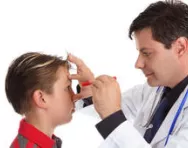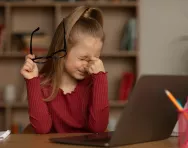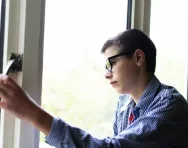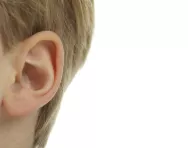Important update from TheSchoolRun
For the past 13 years, TheSchoolRun has been run by a small team of mums working from home, dedicated to providing quality educational resources to primary school parents. Unfortunately, rising supplier costs and falling revenue have made it impossible for us to continue operating, and we’ve had to make the difficult decision to close. The good news: We’ve arranged for another educational provider to take over many of our resources. These will be hosted on a new portal, where the content will be updated and expanded to support your child’s learning.
What this means for subscribers:
- Your subscription is still active, and for now, you can keep using the website as normal — just log in with your usual details to access all our articles and resources*.
- In a few months, all resources will move to the new portal. You’ll continue to have access there until your subscription ends. We’ll send you full details nearer the time.
- As a thank you for your support, we’ll also be sending you 16 primary school eBooks (worth £108.84) to download and keep.
A few changes to be aware of:
- The Learning Journey weekly email has ended, but your child’s plan will still be updated on your dashboard each Monday. Just log in to see the recommended worksheets.
- The 11+ weekly emails have now ended. We sent you all the remaining emails in the series at the end of March — please check your inbox (and spam folder) if you haven’t seen them. You can also follow the full programme here: 11+ Learning Journey.
If you have any questions, please contact us at enquiries@theschoolrun.com. Thank you for being part of our journey it’s been a privilege to support your family’s learning.
*If you need to reset your password, it will still work as usual. Please check your spam folder if the reset email doesn’t appear in your inbox.
Your child's eyesight – what you need to know

Visual impairment affects a huge percentage of people in the UK, as almost every household includes at least one bespectacled family member. Eyesight problems are generally perceived to go hand in hand with ageing, but we also need to be keeping a regular check on our children's eyesight.


Download fantastic science resources today!
- Experiments And Science Fun pack
- Science Learning Programme for each school year
- All the instructions, questions and information you need
Research conducted by the Guide Dogs for the Blind Association, in a primary school in Kingston, London, showed that 12 percent of the children had an undetected eye problem, while as many as 43 percent had never had an eye examination.
Undetected eyesight problems in children
The results from Kingston were far from anomalous, as undetected eye problems and a lack of testing among children is an issue that optometrists across the UK are fully aware of.
Since schools have now withdrawn from providing free examinations, eye care should really be high on parents list of priorities. Although the NHS provides a free service for children under 16, only 2.8 million from a possible 12 million took advantage of this in 2007.
Common eye problems to watch out for
Children should have their eyesight tested at least every 18 months. But you should also make an appointment with the optician if you suspect any of the following problems:
Amblyopia
Lazy eye, or amblyopia, is a loss of vision in an eye that is not corrected by glasses alone. Crossed eyes, eyes that don't line up, or one eye that focuses better than the other can cause amblyopia.
Colour Deficiency
This might range from a slight difficulty in telling different shades of a colour apart to not being able to identify any colour.
Myopia
In myopia (short sightedness), the eyeball is too long for the normal focusing power of the eye. As a result, images of distant objects appear blurred.
Strabismus
Strabismus is a word for eyes that are not straight or do not line up with each other.
Hyperopia
In this condition, which is better known as long sightedness, the eyeball is too short for the normal focusing power of the eye. In children, the lens in the eye accommodates for this error and provides clear vision for distance and usually near viewing, but with considerable effort that often causes fatigue and sometimes crossed eyes.
Astigmatism
Astigmatism results primarily from an irregular shape of the front surface of the cornea, the transparent 'window' at the front of the eye. People with astigmatism typically see vertical lines more clearly than horizontal ones, and sometimes the reverse.
How to avoid children’s eyestrain
Watching films on a tablet, playing games on a console or video-calling a friend on a phone: we're all guilty of excessive screen use at times, but too much screentime can lead to eye strain.
'Eyestrain is a common condition that affects both adults and children and occurs when your eyes get tired from intense use, such as staring at digital devices. Whilst eye strain can be irritating, it usually isn’t serious and will go away once you rest your eyes,' explains Charlotte Cook, Optometrist and Clinical Development Coach at Bayfields Opticians and Audiologists.
'However, there is a risk of becoming short sighted if you use screens a lot. If children have symptoms of eye strain, such as headaches or difficulties focusing, it’s a clear sign that they need to take more breaks from screens to avoid any long-lasting damage.'
To help reduce eye strain:
- Reduce glare and reflections where possible by making sure the screen is pointed away from light sources. You can also fit anti-glare covers to your screen.
- If your child wears glasses, they may benefit from a lens with a blue light filter (speak to your optometrist for advice).
- Regular breaks are vital: for every 20 minutes a child watches something on a screen, encourage them to take 20 seconds at least away from it.
- Encourage your child to vary their activities and take a break from focusing up close, for example by playing outside or going for a walk.
- Avoid small screens if you can; when we’re using devices like smartphones, we tend to hold them closer to our face and strain our eyes more to read smaller text.








